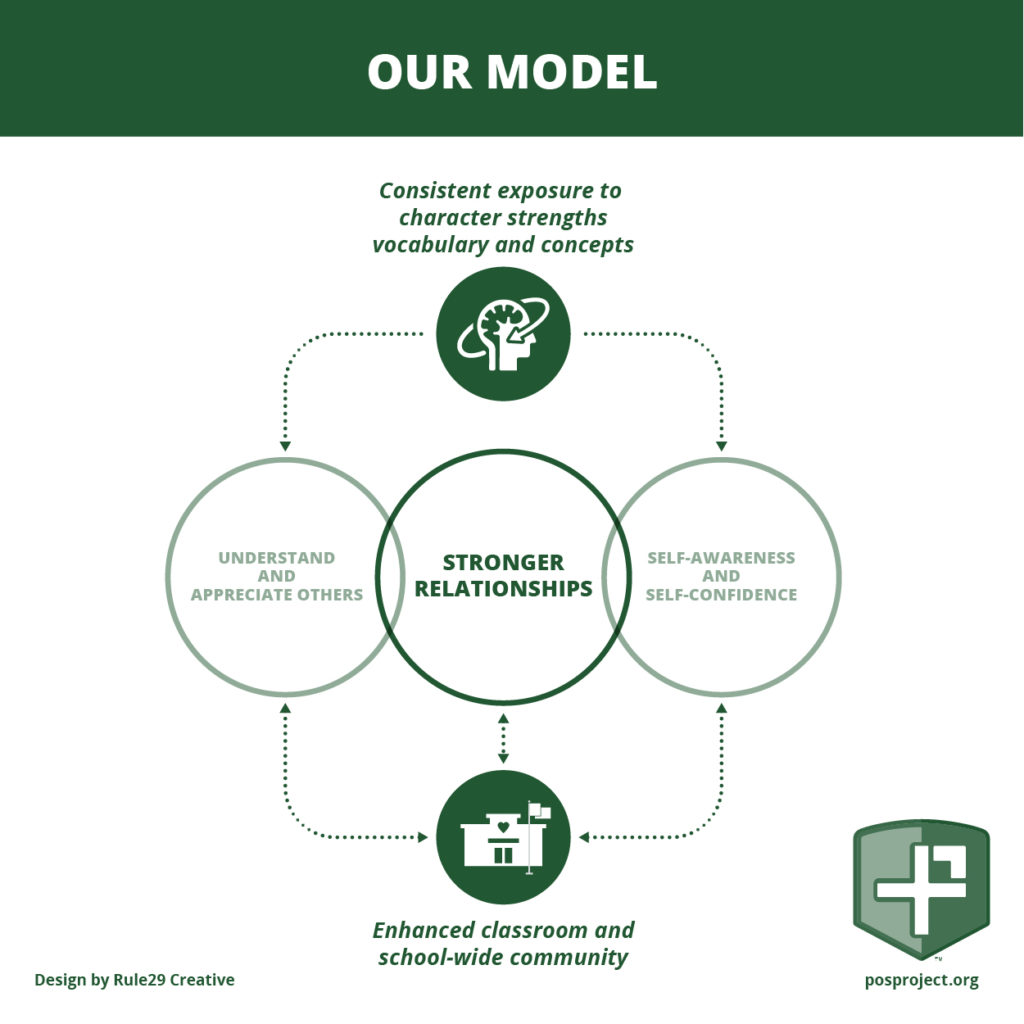Language and Consistency
By Jeff BryanThe Positivity Project provides educators with the knowledge, confidence, and resources to teach their students how to identify, appreciate, and exemplify the character strengths in us all. Our model is holistic and rooted in consistency; it incorporates and impacts students, educators, and families through regular interaction with character strengths vocabulary and concepts.
To help educators use character strengths vocabulary and concepts, we provide our Partner Schools with signage, 1-page overviews, Tier 1 daily slide presentations, and more.

Our emphasis on consistency is grounded in research from child psychology and neuroscience. According to the National Reading Technical Assistance Center, the best way to ensure “young children will understand and remember the meanings of new words and use them more frequently” is through consistent “exposure to targeted vocabulary.” This is because synapses are not static; they constantly adapt in response to activity (Jensen, Teaching with the Brain in Mind, Revised 2nd Edition, p. 38). Simply stated, repetition strengthens connections in the brain. As the adage goes, “Neurons that fire together, wire together.”
However, the repetition must be exciting and occur over a long period of time. To most effectively learn a new word, concept, or skill, students should be exposed to a combination of active learning (pair-sharing, building, discussing, drawing), passive learning (listening, watching, generalizing), and settling time (walking, reflecting, sleeping, eating). And, it’s important to spread out the learning to maximize consolidation – the physical process of turning electrical and chemical input into a memory (Jensen, Teaching with the Brain in Mind, Revised 2nd Edition, 39-43).
“Theorists as far back as Aristotle argued that virtue is the product of habitual action. One-shot positive psychology interventions can probably jump-start the process, but only sustained practice will make changes permanent.”
– Dr. Chris Peterson, Character Strengths and Virtues
Through consistent exposure to the character strengths vocabulary in the classroom, at the lunch table, and at home, students can internalize the importance of character in themselves and others. By helping students stop, reflect, and recognize their strengths, they will have an increased sense of self-awareness and develop authentic self-confidence. Through an outward focus on the Other People Mindset, students will better identify, appreciate, and articulate the strengths in others. The combination of increased self-awareness and self-confidence with better understanding and appreciating other people will foster enhanced social intelligence, greater empathy, and stronger relationships across the school. Through these relationships, which will include student-to-student, student-to-teacher, and student-to-administrator, classrooms and schools will develop a stronger sense of community.


